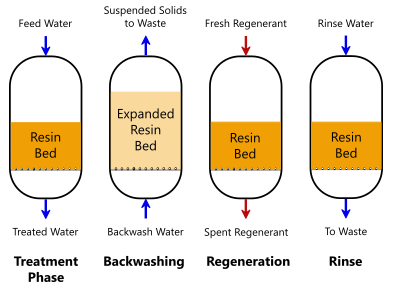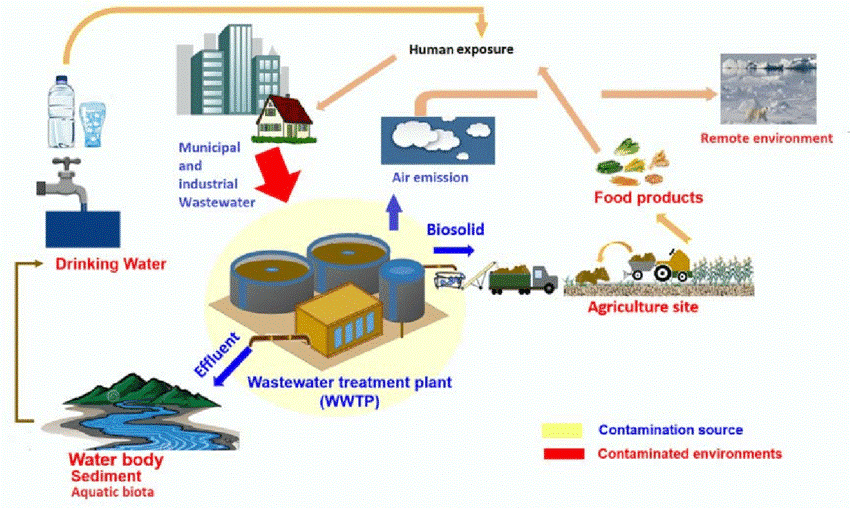Your Overview to PFAS Treatment Technologies and Conveniences
The prevalence of PFAS contamination in water resources demands an extensive understanding of available treatment innovations. Each innovation not just targets specific PFAS compounds however additionally plays an essential role in boosting overall water high quality and securing ecological honesty.
Understanding PFAS Contamination
Understanding PFAS contamination is essential for addressing its pervasive effect on ecological and human wellness (m270 pfas treatment). Per- and polyfluoroalkyl materials (PFAS) are a group of synthetic chemicals widely utilized in numerous commercial and customer products because of their water- and grease-resistant residential or commercial properties. Frequently found in firefighting foams, non-stick kitchenware, and water-repellent materials, PFAS have actually gone into the setting with production procedures, wastewater discharges, and leaching from garbage dumps
When released, these substances continue the environment, resulting in extensive contamination of dirt and water resources. Their one-of-a-kind chemical framework, defined by strong carbon-fluorine bonds, provides them resistant to degradation, resulting in a sensation called "permanently chemicals." PFAS can accumulate in the human body and the food chain, potentially causing adverse wellness results, including immune system disturbance, developing issues, and a raised risk of particular cancers cells.
Regulatory firms and health and wellness companies are significantly acknowledging the relevance of PFAS contamination, triggering initiatives to keep track of, assess, and mitigate its impacts. Understanding the paths of PFAS contamination is important for informing public plan and creating effective approaches to shield both ecological and human wellness.
Introduction of Therapy Technologies
Various therapy technologies have actually been developed to resolve the challenges presented by PFAS contamination in water and soil. These innovations can be broadly classified into numerous classifications, each with its distinct devices and effectiveness in eliminating PFAS compounds.
One famous technique is ion exchange, which uses material materials to catch and eliminate PFAS from infected water. This method is especially efficient for short-chain PFAS and can attain significant decreases in focus degrees. An additional technology, advanced oxidation processes (AOPs), employs strong oxidants and ultraviolet light to break down PFAS into less hazardous compounds. AOPs appropriate for dealing with a variety of PFAS compounds however might call for mindful optimization to make best use of efficacy.

Triggered Carbon Filtering
Triggered carbon filtering is an extensively made use of approach for the removal of PFAS from contaminated water, known for its capability to adsorb a wide series of natural compounds. This technology employs turned on carbon, a very permeable material with an extensive surface area, which facilitates the binding of PFAS molecules through physical adsorption. The performance of turned on carbon in getting rid of PFAS is affected by numerous aspects, including the type of carbon utilized, the contact time, and the concentration of PFAS in the water.
Among the advantages of triggered carbon purification is its convenience; it can be implemented in numerous arrangements, such as granular triggered carbon (GAC) systems or powdered activated carbon (POLITICAL ACTION COMMITTEE) systems. GAC systems are normally utilized in larger-scale applications, while PAC can be used in smaller sized or short-lived configurations. The innovation is reasonably simple to operate and keep, making it available for several water treatment centers.

Ion Exchange Equipment
Ion exchange systems stand for another reliable method for the removal of PFAS from contaminated water, complementing approaches like activated carbon purification. These systems operate on the principle of trading ions in the water with ions hung on a resin material. Ion exchange materials can be particularly here are the findings created to target the negatively charged PFAS compounds, efficiently recording them and enabling cleaner water to pass through.
Among the primary advantages of ion exchange systems is their capacity to remove a vast array of PFAS, consisting of both long-chain and short-chain variants. This convenience makes them suitable for different applications, varying from local water therapy to industrial procedures. Additionally, ion exchange systems can usually achieve reduced detection limitations for PFAS contrasted to a few other treatment methods, hence boosting water high quality.
Nonetheless, it is important to keep track of and handle the regrowth of ion exchange media, as the performance can decrease gradually as a result of saturation. Proper maintenance and replacement of the resin are essential for maintaining the system's effectiveness. Overall, ion exchange systems supply a reputable and effective remedy for PFAS elimination, contributing dramatically to secure drinking water standards and environmental management.
Advanced Oxidation Processes
Advanced Oxidation Processes (AOPs) make use of powerful oxidants to successfully weaken PFAS substances in infected water. These cutting-edge therapy approaches create best site very responsive varieties, such as hydroxyl radicals, that can damage down intricate PFAS particles right into less harmful byproducts. m270 pfas treatment. AOPs typically employ mixes of ultraviolet (UV) light, ozone, hydrogen peroxide, or Fenton's reagent, boosting the oxidation possibility and boosting destruction performance
The key benefit of AOPs hinges on their capability to target a broad series of PFAS compounds, consisting of both long-chain and short-chain variations. This adaptability is necessary, as PFAS contamination commonly includes mixes of different substances with varying chemical frameworks. Additionally, AOPs can be integrated right into existing water therapy systems, making them a useful service for lots of districts and sectors.
Nevertheless, the execution of AOPs can be resource-intensive, calling for mindful factor to consider of functional costs and power usage. Additionally, while AOPs work in breaking down PFAS, they might not entirely eliminate all results, requiring further therapy steps - m270 pfas treatment. On the whole, AOPs represent an encouraging opportunity for addressing PFAS contamination, adding to cleaner water resources and boosted public health defense

Conclusion
By picking the ideal innovation, communities can improve water quality, secure public health, and alleviate the environmental threats connected with PFAS direct exposure. Continued check research study and execution of these techniques are essential for effective monitoring of PFAS contamination in affected areas.